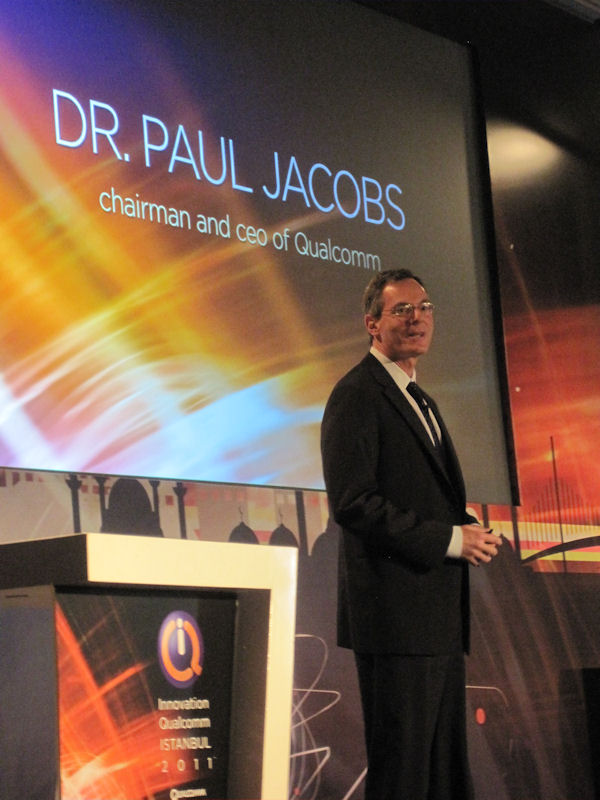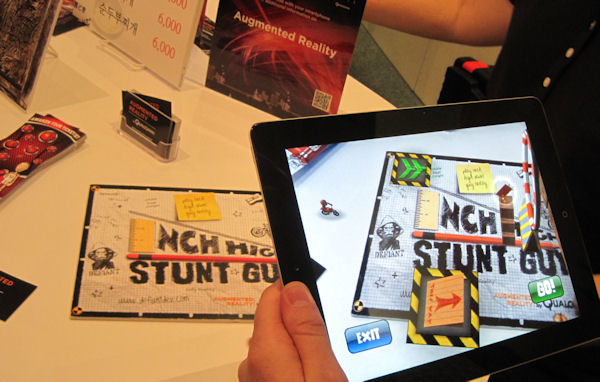A shiny future
Having decided us UK hacks had it far too easy with London events for the past few years, Qualcomm decided to host its Innovation event in Istanbul this year. Undaunted by a 3am start we decided to attend the event once more and see what new shiny things the mobile chip giant had to show.
CEO Paul Jacobs (pictured below) reserved most of his keynote for a general overview of the mobile device scene, and stressed that we're still just at the beginning of an explosion of opportunity. Right now mobile accounts for two percent of total global GDP and rising. There will be two billion new 3G connections by 2015 and, in order to capitalize on all this, Qualcomm currently spends $2.5 billion per year on R&D.

There's considerable further investment in the form of acquisitions and we were reminded of a few recent ones such as iSkoot, which is a technology designed to lower the bandwidth demands of services such as social networking that constantly connect to the cloud, looking for updates. Qualcomm was also keen to publicise an improvement to its GPS service, which now uses an additional Russian satellite to improve the quality and reliability of the GPS signal.
Another recent acquisition was GestureTek, and we were given the first public demonstration of that that technology can provide. Using the forward-facing camera and an array of ultra-sonic microphones, future devices will be able to detect and interpret three dimensional hand gestures - a sort of 3D multitouch.
In the subsequent Q&A Jacobs was asked whether Qualcomm will be buying webOS. He answered that everything still seems to be up in the air and it's still down to HP. From that is seems clear that HP isn't even communicating effectively with the CEOs of companies that might buy its beleaguered mobile arm, so there seems little scope for any developments on that matter soon.
We also had a chat with Snapdragon boss Raj Talluri, who reminded us that Qualcomm's first 28nm chip is due to appear in devices in the first half of next year. We asked Talluri whether being beaten to the quad-core punch by NVIDIA put Qualcomm at a disadvantage and he said: "Most of the software is not there to take advantage of quad-core," adding that this remains mostly the case with dual-core SoCs. "Compare your single-core phone with a Tegra 2 phone and see if you can tell the difference," he said.
Another way in which Talluri feels Qualcomm has an advantage over NVIDIA is in the greater amount of specific tasks it has dedicated silicon for on its SoCs. One example is a DSP (digital signal processing) engine, while Talluri insisted Tegra has to devote one of its main CPU cores to that task.
Lastly we asked Talluri, given the supposition that Apple is moving its chip manufacturing from Samsung to TSMC, whether he anticipates any problems with the supply of 28nm chips and he said he didn't, and that Qualcomm puts so much business the way of its fabs that it's afforded according priority.
One other thing of note at the event was the display of the HTC Jetstream, a ten inch, 4G tablet launched exclusively via AT&T in the US, for now, which has the distinction of being the first non-Tegra 2 Honeycomb tablet, to the best of our knowledge. We'll leave you with a photo of a cool augmented reality game Qualcomm is demonstrating. Note the graphics superimposed on the image on the tablet screen.














